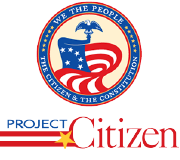This Month in History: May
Extend your social studies instruction with informative and inspiring content from HMH®, HISTORY®, and the Center for Civic Education. Each month we bring you videos, articles, and current events designed to build cultural awareness, media literacy, and a deeper understanding of significant historical figures and events.
This will be the final monthly update for the school year. We will be back in the fall with a bigger and better experience.
Resources for May
- Videos, articles, lessons, and more from our partners at HISTORY and the Center for Civic Education
- Cinco de Mayo Videos
- Videos to support lessons on Asian Pacific American Heritage Month
- News articles for secondary classrooms
Use the tabs on the left to explore this month's resources.
|
Classroom Resources from HMH
Asian Pacific American Heritage Month
Month of May
Since 1992 we have celebrated Asian Pacific American Heritage Month in May. It is a time to commemorate and celebrate the contributions that people of Asian and Pacific Islander descent have made to the United States.
The month of May was chosen because of two events in Asian American history: the first Japanese immigrants arrived in the United States on May 7, 1843; and the transcontinental railroad, which was largely built by Chinese workers, was completed on May 10, 1869.
Asian Pacific American Heritage Month began as a week-long celebration in 1978, when President Jimmy Carter signed a resolution designating the first ten days of May as Asian-Pacific American Heritage Week. The week was extended to a month when President George Bush signed it into law on October 28, 1992.
The month is celebrated with festivals, parades, community events, and cultural performances meant to honor and teach about Asian American history and culture.
Related Links
Memorial Day
May 31
On the last Monday in the month of May, Americans will have the day off work and school. Some will attend picnics or even parades, take in a baseball game, go swimming, or just relax and enjoy the three-day weekend and the unofficial start of summer.
But others will get up early on their day off and go out to local cemeteries. There they will pay their respects to those American military personnel who died serving their country. In attendance at these ceremonies, there will be many veterans of the U.S. military from all generations. Officially, however, the day is set aside not to praise the living veterans (they are honored on Veterans Day, November 11), but rather those who died in battle or from wounds received in battle in any of America's wars or armed conflicts.
Related Links
- History of Memorial Day (external link)
From pbs.org, a short history on the origins of Memorial Day.
- Memorial Day Background (external link)
From Library of Congress, a history of Memorial Day and ways in which veterans are honored.
|
Free Classroom Resources from HISTORY
|
 |
Memorial Day
Memorial Day, an American holiday observed on the last Monday of May, honors men and women who died while serving in the U.S. military. Originally known as Decoration Day, it originated in the years following the Civil War and became an official federal holiday in 1971. Many Americans observe Memorial Day by visiting cemeteries or memorials, holding family gatherings, and participating in parades. Unofficially, it marks the beginning of summer.
Cinco de Mayo
Cinco de Mayo—or the fifth of May—commemorates the Mexican army’s 1862 victory over France at the Battle of Puebla during the Franco-Mexican War (1861–1867). A relatively minor holiday in Mexico, in the United States Cinco de Mayo has evolved into a celebration of Mexican culture and heritage, particularly in areas with large Mexican American populations. Cinco de Mayo traditions include parades, mariachi music performances, and street festivals in cities and towns across Mexico and the United States.
|
|
Students Take Action from the Center for Civic Education
|
The Students Take Action service-learning feature relates stories of students who have participated in the Center for Civic Education’s Project Citizen program, which encourages students to take part in state or local government and learn how to monitor and influence public policy. Help your students become active and engaged citizens in their own communities with these resources.
|

|
|
HMH In the News and Current Events
Hmhinthenews.com is a great resource for elementary classrooms with fun articles about what's going on in the news. This website delivers age-appropriate current events stories about people, communities, the United States, and the world every month. Come back often for new stories, spotlight features, and polls.
Hmhcurrentevents.com enriches your secondary classroom with subject-specific information from world history, world geography, American history, economics, psychology, sociology, civics, government, and African American history. It also spotlights today's headlines with activities, web links, and the HMH Election Connection.
|
HISTORY® and the "H" logo are trademarks of A&E Television Networks (AETN). All rights reserved. Houghton Mifflin Harcourt®, The Learning Company®, and HMH® are registered trademarks of Houghton Mifflin Harcourt.
|
